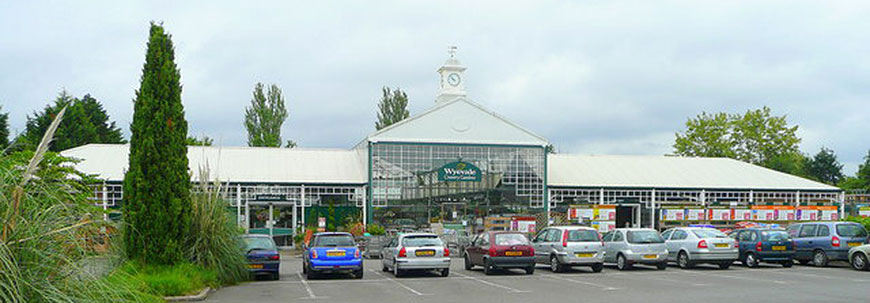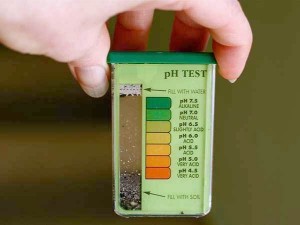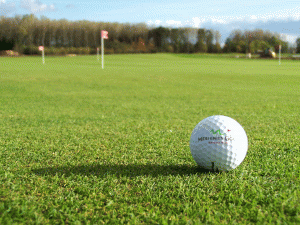Give your lawn a haircut, not a shave, and other tips for keeping it green
As a kid of four or five, I became suspicious of lawns. In a rare moment of TV viewing, I had seen a public-service ad wherein a bundle of green leafy stuff thudded down into an eerily vacant playground while a baritone voice boomed out something like “Grass. We think it’s bad for kids. Stay away from it.” Mom insisted that was “bad” grass which did not grow in our yard, but she would not elaborate. This fueled my mistrust, so I kept off the grass a while. These days, bread is no longer money, mint is just a flavor, and the pernicious leafy stuff mostly goes by other names. There is only one grass, and it is almost time to cut it again.

You can drop a lot more dough than necessary at the garden center. Photo: Jonathan Billinger, Creative Commons, some rights reserved
Jargon may have changed, but things like paying taxes and mowing lawns have not. Across the region, a bewildering array of lawn-care products have sprouted at big-box stores and garden centers. It is easy to spend a lot of dough—I mean money—on fertilizers, weed killers, and seed, but hard to make sense of which products are right for you. Before you shop, here are a few thoughts that may help sort things out.
Comparison spells trouble. Well not literally, but it is mighty unfair. Fashion models have airbrush artists and makeup consultants. Golf courses have full-time turf experts, loads of chemicals, and a massive budget. With some knowledge and a little maintenance, we and our lawns both can look good, but let’s not compare with deep-pocketed pros. In the words of Dr. Frank Rossi, a leading Cornell Turfgrass Science researcher,
“Chances are, you can grow a pretty good lawn without using insecticides, fungicides, or herbicides. You may even be able to do it using little or no chemical fertilizer, if that’s your goal. Will your lawn look like a putting green? No. Will it stand up to wear and tear like a professionally managed soccer field? Not a chance. But if you arm yourself with an understanding of what grasses need to thrive, and commit to a long-term plan to meet those needs, you can grow a perfectly acceptable lawn…”

Soil pH test kit. Result? Acidic. Photo: Susy Morris, Creative Commons, some rights reserved
Get the dirt on your soil. If your grass looks bedraggled, fertilizer may not be the answer; in fact, early-season nitrogen can weaken grass and make lawns worse in the long run. At the very least, get a soil pH test—a pH more acidic (lower) than 6.0, or more alkaline than (above) 7.0 will hinder plants’ ability to absorb nutrients. The majority of samples I get at the office have pH values too high for healthy lawns, sometimes 100 or even 1,000 times too alkaline due to annual lime treatments. Lime is only good if it’s needed.
If it has been more than three years since the soil was tested, you may want to invest in a lab analysis. For under twenty dollars you can get nutrient levels, with specific recommendations, plus pH and salt content. This last item may seem odd, but fertilizers, herbicides, wood ash and deicing agents are all sources of salt, which can damage soil structure, harm microbes, and aggravate water stress. Only fertilize based on soil test results, and only use nitrogen in the fall.
Nature abhors a vacuum, which is why I keep mine hidden away indoors—no sense offending nature if you can avoid it. This hatred of emptiness means that if you don’t re-seed bare (and weak) spots in the lawn, she’ll fill it with whatever is handy, probably weeds. Edging along the sidewalk or driveway may produce the look you want, but it also produces a lot of bare earth, so if you have a weed issue, especially crabgrass, try to break the edging habit.

A putting green is not the goal for a healthy lawn. Mow when the grass reaches about 5 inches. 3.5 inches is an ideal height. Photo: Felix7634, Creative Commons, some rights reserved
Another type of vacuum is a close-cropped lawn. Not only does close mowing cause weak, stunted grass roots (and thus plants), it allows the sun full access to the soil. This gives weeds a tremendous advantage. Have trouble with ground ivy? Put away the vacuum. Stop shaving the earth and start mowing the grass.
The most important thing you can give your lawn is more of its hair. Studies show that changing from a grass height of 2.5 inches to 3.5 inches leads to a vast improvement in lawn health. Leaving grass longer will greatly reduce weed pressure, lawn diseases, and fertilizer requirements. Perhaps the most dramatic change with longer grass is a lasting drop in weed population.
If you need to use herbicides to reduce weeds, follow the label instructions closely. Some broadleaf (selective) herbicides contain chemicals that may stress or injure trees. Pre-emergent herbicides inhibit weed germination, and are used for crabgrass control. Apply pre-emergent products around the time forsythias are in bloom.
Another tip is to only mow a third of the grass at a time. For example, to maintain a 3.5-inch turf height, mow when the grass gets five inches high. Keep the blades sharp—it can help reduce disease, plus it looks nicer and saves on mower gas. And it almost goes without saying that grass clippings belong to the lawn, not the landfill. Leave the clippings—that’s your fertilizer.
White grubs—we have five species in northern NY—can become a problem if there are more than ten per square foot of lawn. Several nontoxic and low-toxicity treatments have come on the market in the past few years, but timing varies for all of them. Milky Spore treatment is safe, but only effective down south. Cornell says it is too cool up north for this option, so save your bread. See the website below for more details.
There are many solid lawn-care resources out there, but always check the source, which should be from .edu or .gov sites. Cornell Senior Extension Associate Lori Brewer has assembled the work of many experts, including Dr. Rossi, into a comprehensive 47-page doenloadable book entitled “Lawn Care,” which is free.
I think it would contribute to a better world if we teach our kids to stay grounded, and to let the grass get high.
Paul Hetzler is a horticulture and natural resources educator with Cornell Cooperative Extension of St. Lawrence County.
Tags: lawn care








No! Give it a shave. Cut it down to dirt to kill it off. That way won’t have to cut it anymore and you will save the planet by not polluting the air with your lawnmower or chemicals.
Enjoyable read as always Paul! Thanks!